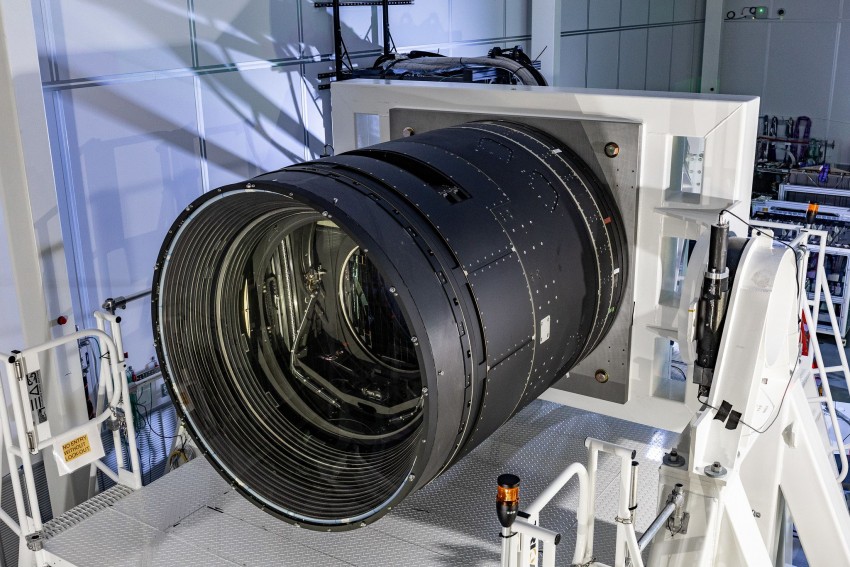Let us ignore for a moment the advanced technological civilizations that can reveal to us through so-called technosignatures, that is, chemical compounds resulting from technological processes. All life on Earth depends on organic matter centered on carbon. All carbon-based biology requires specific nutrients, but it also releases other chemicals into the atmosphere that can provide some clues. Such a compound might be, for example, methane, which is produced on Earth primarily in biological processes. The problem is that there are non-biological processes that produce methane as well. So the discovery of methane in the atmosphere of a distant planet may be interesting, but it is certainly not a clear sign that any form of life exists there. Moreover, if it were, everyone would be talking about it today, considering the fact that the James Webb Space Telescope recently detected methane and carbon dioxide in the atmosphere of planet K2-18 b.
Read also: This is what astronomers have been searching for for years! The James Webb Telescope has discovered a wonderful world
The search for life may become more difficult
If we can by no means identify unambiguous biosignatures, that is, chemical compounds that would clearly indicate the existence of life similar to our own on another planet, how can we find life that is not at all like us and is not carbon-dependent?
For a long time, the world of science has been wondering whether it is possible for there to be life on other planets in the universe that are not like us because they depend on an element other than carbon. If so, the chances of remote detection would be almost nil. After all, we don’t know what chemical reactions might fuel such life, so we don’t know what it would eat or what compounds it would emit into the atmosphere, and so we don’t even know what to look for to find such life.
A team of scientists from the University of Wisconsin-Madison decided to analyze the vast scientific literature published over decades in many languages of the world in search of information about self-sustaining autocatalytic reactions in which molecules are created that then undergo the same reactions through which other molecules of the same can be created. Type. No matter how you look at it, reproduction is self-stimulation, where two individuals of a given species can produce another. The same is true at the cellular level, where one cell becomes two cells, can become four, and so on.
Going down to the level of chemical reactions, scientists decided to look for examples of self-catalysis that could lead to abiogenesis, that is, the emergence of life.
To this end, scientists focused on recombination cycles, through which subsequent copies of chemical molecules can be created. Analysis of scientific documents from the past two centuries has allowed scientists to discover 270 different catalytic reaction cycles. It turns out that they are not unique, and can be natural in many environments, including those that differ significantly from the environment on Earth.
Furthermore, some of these courses focus on elements that are very rare on Earth, such as mercury or thorium. Likewise, some of these cycles only occur at very high or low temperatures or at extreme pressure. As if this were not enough, scientists have been able to discover autocatalytic cycles involving noble gases, which, in principle, do not react with other elements. As xenon can engage in autocatalysis, they point out, such processes may occur on a much larger scale in the universe than previously thought.
It is worth noting that many different autogenic cycles, which are fundamentally different from each other, may occur in many settings. This, in turn, could trigger chemical reactions that would produce a wide range of chemicals on the surface of some distant exoplanet. Who knows, maybe this wealth will lead to a life completely different from ours.
The results of the analysis have been published September 18 on patrol Journal of the American Chemical Society They make you think. Astronomers have discovered more than 5,500 exoplanets over the past three decades. However, it is impossible to say whether there is a single planet with life on it. When searching for life, we currently look for Earth-like planets located in the habitable zone of their star, i.e. where liquid water might exist on the planet’s surface. When a planet is gaseous, very hot, or very cold, and there is no water, we don’t even assume life exists. However, we must remember that some forms of life may exist on these planets as well. The problem is that without knowing its biology, we cannot imagine such life and do not know any chemical compound that could indicate such life. So, there’s a non-zero chance that we’ve actually discovered an exoplanet that supports life, but we’re just not aware of it. This is a really interesting idea.

Echo Richards embodies a personality that is a delightful contradiction: a humble musicaholic who never brags about her expansive knowledge of both classic and contemporary tunes. Infuriatingly modest, one would never know from a mere conversation how deeply entrenched she is in the world of music. This passion seamlessly translates into her problem-solving skills, with Echo often drawing inspiration from melodies and rhythms. A voracious reader, she dives deep into literature, using stories to influence her own hardcore writing. Her spirited advocacy for alcohol isn’t about mere indulgence, but about celebrating life’s poignant moments.









